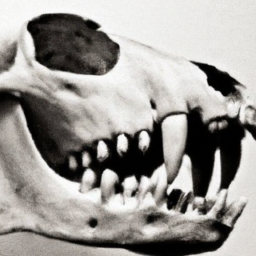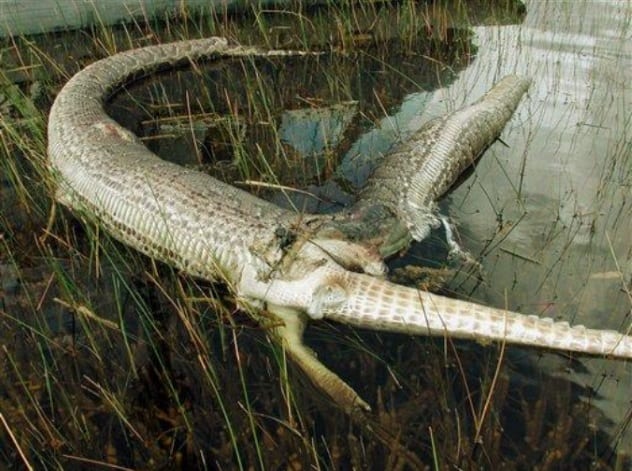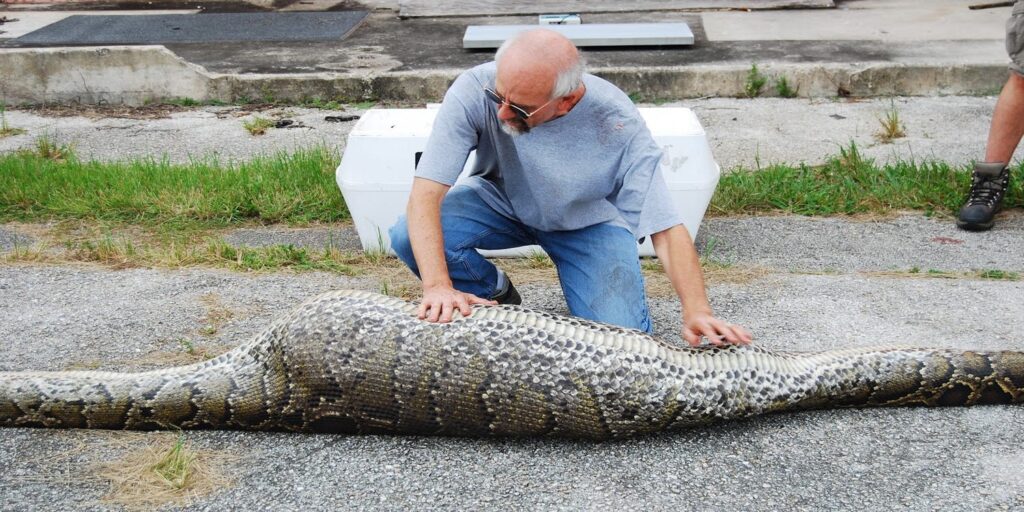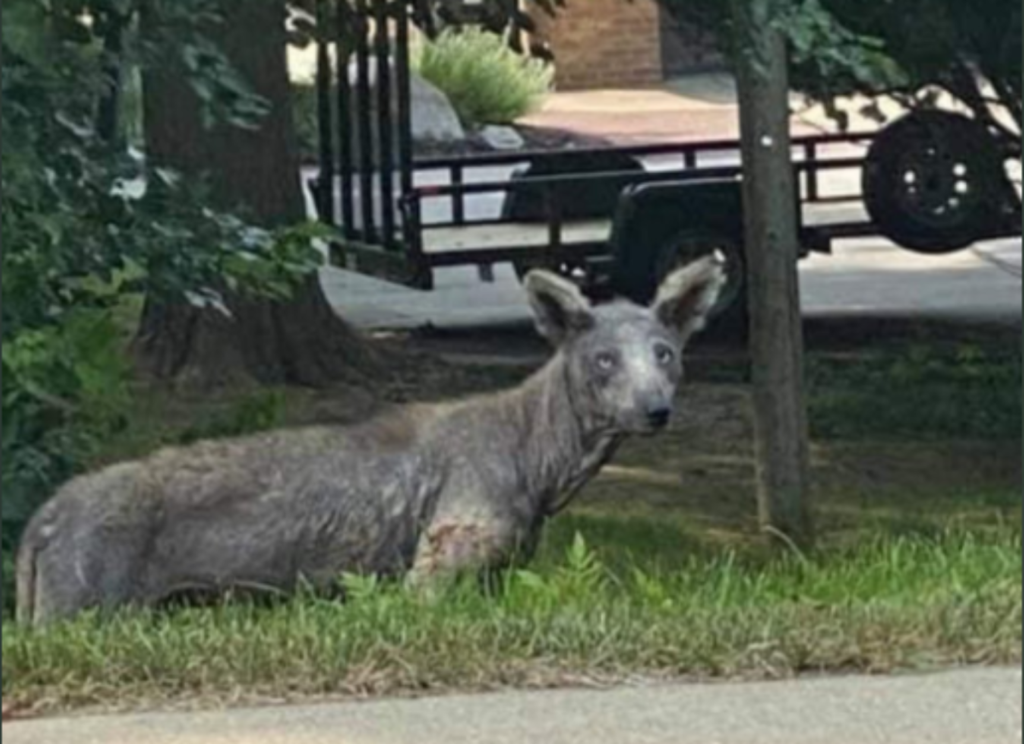
Imagine exploring the wild and mysterious world of Florida, where unusual creatures roam freely and capture the imagination. Get ready to embark on an extraordinary adventure with “Strange Animals In Florida.” This captivating product takes you on a journey through the Sunshine State’s untamed wilderness, uncovering the fascinating secrets of its most peculiar inhabitants. From the elusive Skunk Ape to the mesmerizing Glass Lizard, delve into a world where reality blends with folklore, discovering the strange and enchanting creatures that call Florida home. Brace yourself for a thrilling encounter with the unknown as you dive into the pages of “Strange Animals In Florida.”

Florida Panther
Overview of the Florida Panther
The Florida Panther, scientifically known as Puma concolor coryi, is a unique and highly endangered subspecies of cougar or mountain lion. This majestic creature is native to the swamps and forests of southern Florida, making it the only known population of cougars left in the eastern part of the United States. The Florida Panther is closely related to the other members of the Puma concolor species, with its distinctive features and behaviors setting it apart.
Habitat and Population of Florida Panthers
Florida Panthers primarily inhabit the wild and expansive territories within the southern tip of Florida, including the Everglades and Big Cypress National Preserve. These areas offer an ideal environment for the panthers, as they provide dense cover for hunting and a range of prey species. Unfortunately, the rapid urban development has drastically reduced their habitat, leading to increased encounters with humans and road mortalities.
The population of Florida Panthers is dangerously low, estimated to be around 120-230 individuals. This decline is mainly due to habitat loss, road accidents, and inbreeding depression. To address this issue, conservation efforts have been implemented to protect their remaining habitat and establish corridors to connect fragmented areas, ensuring genetic diversity and promoting population growth.
Unique characteristics of the Florida Panther
The Florida Panther possesses several distinct characteristics that separate it from other members of the cougar family. One notable feature is their smaller size, with adult males weighing between 100 and 160 pounds, while females range from 50 to 100 pounds. Additionally, Florida Panthers have a tawny brown coat, which helps them blend in with the surrounding vegetation.
These magnificent creatures are powerful swimmers and climbers, enabling them to navigate the diverse terrain of their habitat. With their acute sense of hearing and excellent vision, Florida Panthers can stealthily stalk and ambush their prey, including deer, wild hogs, and smaller mammals. Their population also relies heavily on the availability of freshwater sources for drinking and cooling off in the hot and humid Florida climate. Efforts to protect these unique and endangered creatures are crucial to their survival and the preservation of Florida’s natural heritage.
American Alligator
Brief history and evolution of American Alligators
The American Alligator, scientifically known as Alligator mississippiensis, has a fascinating history that dates back to the time of dinosaurs. These reptiles are part of the Crocodylia order, which is an ancient lineage that has existed for more than 230 million years. Alligators evolved from archosaurs and adapted to live in freshwater habitats, making them highly successful predators in the swamps, marshes, and rivers of the southeastern United States, including Florida.
Habitat and diet of American Alligators
American Alligators are well-adapted to their semi-aquatic environment. They can be found in various freshwater ecosystems, such as marshes, lakes, ponds, and rivers throughout Florida. These reptiles are known to be thermoregulators, using their large bodies to absorb heat from the sun and regulate their internal temperature. During colder months, they dig burrows, or “gator holes,” to escape the freezing temperatures.
The diet of American Alligators primarily consists of fish, turtles, birds, mammals, and occasionally smaller alligators. They are opportunistic feeders and use their powerful jaws and sharp teeth to grasp and subdue their prey. Alligators are known for their “death roll” technique, where they twist their bodies to tear off pieces of their captured prey.
Unusual features and behaviors of American Alligators
American Alligators possess several unique features and behaviors that make them intriguing creatures. They have a sensor on their snout called the “dermal pressure receptor,” which enables them to detect small vibrations in the water, helping them locate prey even in dark or murky conditions. Additionally, these reptiles have a remarkable ability to stay submerged for extended periods, with some individuals capable of holding their breath for up to two hours.
One notable behavior of American Alligators is their vocalization, which includes various sounds such as hissing, bellowing, and growling. These vocalizations serve as a means of communication among individuals, particularly during mating season or territorial disputes. Overall, the American Alligator stands as an impressive and iconic species in the diverse ecosystems of Florida.
Manatees
Description and characteristics of Manatees
Manatees, also known as sea cows, are gentle herbivorous mammals that inhabit the warm coastal waters, rivers, and springs of Florida. These large marine mammals belong to the order Sirenia, alongside dugongs and the extinct Steller’s sea cow. Manatees are well-adapted to a marine lifestyle and have several unique characteristics.
They are known for their round, barrel-shaped bodies covered in thick, wrinkled grayish-brown skin. Manatees possess large flippers, which they use for steering, along with a flat, paddle-like tail. They do not have hind limbs but have powerful muscles that facilitate their swimming movements. These creatures can grow up to 13 feet in length and weigh around 1,500 to 3,500 pounds, making them one of the largest herbivorous marine mammals.
Lifestyle and survival factors of Manatees
Manatees are gentle giants that lead a slow-paced and peaceful lifestyle. They are herbivores, feeding on a diet consisting mainly of seagrasses, aquatic plants, and other vegetation. Due to their herbivorous diet, manatees spend a considerable amount of time grazing, consuming up to 10% of their body weight in vegetation daily. They are known to use their flippers and mouth to uproot plants from the seabed.
Unlike marine mammals with blubber, manatees have a unique adaptation to survive in cold waters. They possess a low metabolic rate, allowing them to tolerate and regulate their body temperature in a wide range of water temperatures.
Cultural and ecological significance of Manatees
Manatees hold immense cultural and ecological significance in Florida. They have become iconic symbols of the state’s natural heritage and attract tourists from around the world. Manatee watching and ecotourism activities provide valuable economic opportunities for the local communities.
In ecological terms, manatees play a critical role in their habitat as ecosystem engineers. By feeding on vegetation in shallow waters, they help maintain the health and balance of seagrass beds and other aquatic plant communities. Furthermore, manatees serve as indicators of water quality and habitat degradation, making their conservation efforts crucial for the overall health of Florida’s coastal ecosystems.
Key Deer
Key deer’s status as an endangered species
The Key Deer, scientifically known as Odocoileus virginianus clavium, is a unique subspecies of white-tailed deer and holds the title of being the smallest species of North American deer. These deer are endemic to the Florida Keys, specifically inhabiting the Lower Keys region. Due to habitat loss, excessive hunting, and predation, the Key Deer was designated as an endangered species in 1967.
Role and importance of Key Deer in the ecosystem
While the Key Deer’s population may be small, their existence serves a vital role in the delicate ecosystem of the Florida Keys. As herbivores, Key Deer play a key role in shaping the vegetation composition and distribution in their habitat. By selectively consuming certain plant species, they influence the growth and regeneration of vegetation, maintaining the balance of plant communities.
Furthermore, Key Deer act as prey for a variety of predators, including the American alligator, panthers, bobcats, and birds of prey. Their presence ensures a diverse and healthy predator-prey dynamic, contributing to the stability of the local ecosystem.
Physical characteristics and behaviors of Key Deer
Key Deer possess distinct physical characteristics that differentiate them from other deer species. Adult males, known as bucks, typically stand at around 30-32 inches at the shoulder and weigh between 75-100 pounds. Females, or does, are slightly smaller, measuring around 26-28 inches and weighing 55-75 pounds. Both sexes have a reddish-brown coat with a white underside and a slender body structure.
Key Deer exhibit some interesting behaviors as well. They are skilled swimmers and are known to cross bodies of water, especially during the mating season or when searching for food. Additionally, they have evolved to be efficient jumpers, allowing them to navigate their habitat consisting of dense vegetation and small islands.
Efforts to protect and restore their habitat, manage predation, and educate the local community have been implemented to ensure the survival and recovery of the endangered Key Deer population.

Florida Black Bear
Distinct features of Florida Black Bear
The Florida Black Bear, scientifically known as Ursus americanus floridanus, is a subspecies of the American black bear. It is indigenous to Florida and represents the only native bear species found in the state. Florida Black Bears, like their American black bear relatives, possess several distinct features that set them apart.
These bears have a stocky build with a broad head, prominent snout, and small, rounded ears. They showcase a wide range of color variations, from black to cinnamon and even blonde, depending on the individual and their location. Florida Black Bears can grow to an impressive size, with males averaging around 250-450 pounds, and females weighing between 100-250 pounds.
Habitat, diet, and lifestyle of the Florida Black Bear
Florida Black Bears predominantly inhabit forested areas across the state, including hammocks, swamps, and scrub habitats. They are highly adaptable and can also be found in suburban neighborhoods where natural habitats have been encroached upon by human development.
The diet of Florida Black Bears mainly consists of plant material, such as fruits, nuts, berries, leaves, and grasses. However, they also opportunistically feed on insects, carrion, and occasionally small mammals. During the fall, when various fruits ripen, bears actively forage and consume large quantities of food to prepare for the winter months when their metabolic rate decreases.
Florida Black Bears are solitary animals, except during the breeding season or when females are rearing their young. They have an excellent sense of smell, which they utilize for finding food and potential mates. The bears are known to roam large areas covering 60-200 square miles to search for food and suitable habitat, making their conservation challenging due to habitat fragmentation.
Endangered status and conservation of the Florida Black Bear
The Florida Black Bear population faces several threats such as habitat loss, habitat fragmentation, road mortality, and conflicts with humans due to increased proximity. Recognizing the importance of protecting this iconic species, the Florida Black Bear was listed as a threatened species in the state in 2012.
State and federal agencies, along with numerous conservation organizations, have implemented measures to protect and restore bear habitats, establish wildlife corridors, and raise public awareness about coexisting with bears. These efforts aim to mitigate conflicts, reduce human-bear interactions, and ensure the long-term survival of this magnificent species.
Gopher Tortoise
General overview of the Gopher Tortoise
The Gopher Tortoise, scientifically known as Gopherus polyphemus, is a charismatic reptile native to the southeastern coastal plain of the United States, including Florida. These tortoises are well-adapted to the sandy, upland habitats of the region. They play a crucial role in ecosystem maintenance and are considered a keystone species due to their unique skills and survival adaptations.
Gopher Tortoises have a sturdy and dome-shaped carapace, or shell, which can reach lengths of up to 15 inches. Their front and hind limbs feature robust claws, which they use for digging extensive burrows that can extend up to 40 feet long and 10 feet deep. These burrows provide shelter not only for the tortoises themselves but also for numerous other species, such as snakes, rabbits, and frogs.
Unique skills and survival adaptations of Gopher Tortoise
Gopher Tortoises possess several unique skills and adaptations that aid in their survival. Their most notable adaptation is their ability to dig and maintain complex burrow systems. These burrows provide refuge from extreme temperatures, predators, and wildfires. The burrows also help aerate the soil, benefiting numerous other organisms living in the surrounding ecosystem.
Another key adaptation of Gopher Tortoises is their ability to survive without water for extended periods. They obtain the necessary moisture from their diet, which primarily consists of fibrous vegetation such as grasses, legumes, and low-growing plants. This adaptation allows them to thrive in the sandy and often arid habitats of Florida.
Threats and conservation status of the Gopher Tortoise
Gopher Tortoises face several threats to their survival, primarily due to habitat loss and fragmentation resulting from urbanization and agricultural expansion. The destruction of their natural habitat limits their ability to establish new burrows, find suitable mates, and access food sources.
Recognizing the ecological importance and declining population numbers, the Gopher Tortoise was listed as a threatened species in Florida in 2007. Various conservation efforts have been put in place to protect and restore their habitat, including the creation of protected areas and the implementation of habitat management practices, such as prescribed burns and controlled grazing.
Efforts to conserve Gopher Tortoises require collaboration between government agencies, landowners, and conservation organizations, as these unique reptiles play a critical role in maintaining the health and biodiversity of Florida’s ecosystems.
Burmese Python
Invasion of the Burmese python in Florida
The Burmese Python, scientifically known as Python bivittatus, has unfortunately invaded and established itself as an invasive species in the state of Florida. Originally from Southeast Asia, these large constrictor snakes have become a significant ecological concern due to their rapid population growth and the subsequent negative impacts on native wildlife.
The introduction of Burmese Pythons in Florida can be attributed to the pet trade, where some individuals were released or escaped into the wild, establishing breeding populations. Since then, the python population has spread across the southern part of the state, including the Everglades National Park and surrounding areas.
Effects of the Burmese python on Florida’s biodiversity
The presence of Burmese Pythons in Florida has resulted in severe ecological consequences. These large predators are known to prey upon a wide range of native wildlife, such as mammals, birds, reptiles, and amphibians. The predation pressure imposed by pythons has led to significant declines in several native species, including raccoons, rabbits, and wading birds.
Furthermore, the Burmese Python’s ability to reproduce rapidly and the lack of natural predators in Florida has allowed their population to explode. Their high reproductive potential, combined with a lack of adequate control measures, poses a serious threat to the natural balance and biodiversity of Florida’s ecosystems.
Measures to control the population of Burmese Pythons
Efforts to control the population of Burmese Pythons have been implemented to mitigate their negative impacts on Florida’s wildlife. These control measures include public awareness campaigns, reporting and removal programs, snake detection dogs, and the implementation of licensed hunting programs, targeting invasive reptiles.
Additionally, research and management initiatives aim to better understand the behavior, movement patterns, and reproductive biology of Burmese Pythons. These efforts can aid in the development of more effective strategies to control their population and prevent further ecological damage.
The battle against the invasion of Burmese Pythons in Florida continues, highlighting the need for sustained efforts and collaboration among researchers, wildlife agencies, and local communities to protect the state’s unique biodiversity.
Anhinga Bird
Anhinga Bird’s unusual feeding and nesting behaviors
The Anhinga Bird, scientifically known as Anhinga anhinga, is a distinct aquatic bird species commonly found in Florida’s wetlands, lakes, and marshes. It is sometimes referred to as the “snakebird” due to its long, snake-like neck. The Anhinga Bird possesses several unusual feeding and nesting behaviors that set it apart from other avian species.
One notable behavior of the Anhinga Bird is its feeding strategy. It is known for being a “darter,” meaning it hunts underwater for fish, frogs, and other small aquatic prey. With its long and sharp beak, the bird swiftly spears its prey, catching it before resurfacing.
During nesting season, the Anhinga Bird displays a unique breeding habit. It constructs large stick nests in trees, often alongside other wading bird species. However, unlike most birds, the Anhinga Bird does not possess waterproof feathers. As a result, it frequently perches itself in the sun or spreads its wings to dry after submerging underwater, a behavior commonly known as “wing drying.”
Role and contribution of Anhinga bird in the ecosystem
The Anhinga Bird plays a valuable role in Florida’s wetland ecosystems. Their feeding habits contribute to the natural balance of fish populations, helping to control their numbers and prevent overpopulation. By consuming fish and other aquatic prey, Anhinga Birds help maintain healthy fish populations and overall ecosystem stability.
Additionally, their nesting behaviors provide nesting sites for other bird species, further enhancing and supporting the breeding habitat within Florida’s wetlands. The Anhinga Bird’s unique contribution adds to the ecological diversity and richness of the state’s ecosystems.
Potential threats and the conservation status of the Anhinga Bird
While Anhinga Birds are not currently listed as endangered or threatened, they do face certain threats that impact their populations. Habitat destruction and degradation due to human activities, including wetland drainage and urbanization, can disrupt their nesting and foraging habitat. Additionally, disturbances caused by human recreational activities, such as boating or urban expansion near their habitats, can lead to decreased breeding success.
As with many other avian species, maintaining and protecting their natural habitats is crucial for the long-term survival of the Anhinga Bird. Conserving wetlands and implementing responsible land-use practices are essential steps towards ensuring the preservation of these fascinating and ecologically valuable birds in Florida.

Florida Bonneted Bat
Characteristics and lifestyle of the Florida Bonneted Bat
The Florida Bonneted Bat, scientifically known as Eumops floridanus, is the largest bat species in Florida and one of the rarest mammals in North America. It is a subspecies of the greater bonneted bat, found only in southern Florida. These bats are remarkable creatures, showcasing several unique characteristics and a fascinating lifestyle.
Florida Bonneted Bats have a distinct appearance, with a prominent “bonnet” shaped structure on their forehead. This feature, along with their robust build, sets them apart from other bat species. They have a long wingspan, sometimes reaching over two feet, enabling them to fly swiftly and efficiently through the night skies.
These bats are primarily insectivorous, feeding on a variety of large flying insects, including beetles, moths, and mosquitoes. They use echolocation to locate their prey, emitting high-frequency sounds and interpreting the echoes to navigate and capture insects on the wing.
Threats and conservation status of the Florida Bonneted Bat
The Florida Bonneted Bat faces numerous threats, leading to its critically endangered status. Habitat loss, primarily due to urban development and the destruction of natural habitats, has significantly impacted their populations. Additionally, the loss of roosting sites, such as tree cavities and abandoned buildings, further compounds the decline of this rare bat species.
Efforts to conserve the Florida Bonneted Bat include habitat restoration and protection, reducing disturbances in known roosting areas, and targeted monitoring to gather data on population trends and conservation needs. Additionally, public education and raising awareness about the importance of bats in ecosystems play a vital role in conserving these unique mammals.
The preservation of the Florida Bonneted Bat is crucial not only for the survival of this species but also for the overall health and balance of Florida’s diverse ecosystems.
Miami Blue Butterfly
A brief introduction to the Miami Blue Butterfly
The Miami Blue Butterfly, scientifically known as Cyclargus thomasi bethunebakeri, is an exquisite and highly endangered butterfly species endemic to southern Florida. It is considered one of the rarest butterflies in the United States, with populations restricted to a few specific areas due to habitat loss and other threats.
This small butterfly is known for its vibrant blue coloration, which distinguishes it from other butterfly species. Its wingspan ranges from approximately 1 to 1.2 inches and features intricate patterns and markings. The Miami Blue Butterfly’s beauty and rarity make it a highly sought-after sight for nature enthusiasts and conservationists alike.
Role and importance of butterflies in the ecosystem
Butterflies, including the Miami Blue Butterfly, play a vital role in the ecosystem as pollinators. As they feed on nectar from flowers, they inadvertently transfer pollen from one flower to another, facilitating the process of cross-pollination. This ensures the reproduction and survival of various plant species, contributing to the overall biodiversity and health of ecosystems.
Butterflies also serve as important indicators of environmental health and habitat quality. Their presence or absence can reflect changes in vegetation composition and provide valuable insights into the overall condition of an ecosystem.
Conservation status and efforts for the Miami Blue Butterfly
Due to habitat loss, pollution, and other threats, the Miami Blue Butterfly is critically endangered. Its range has become severely restricted, mainly to the Florida Keys and nearby islands. Efforts to conserve this delicate butterfly species have been ongoing for years.
Conservation organizations and agencies focus on habitat restoration, including the planting of host plants for caterpillars and nectar sources for adults. They also conduct captive breeding and reintroduction programs to boost the population and increase genetic diversity.
Educating the public about the importance of butterfly conservation and creating awareness regarding responsible habitat management practices are also key components of conservation efforts. The collective actions and dedication of scientists, conservationists, and communities are vital to the survival of the Miami Blue Butterfly and to ensure the preservation of the beauty and biodiversity it represents in Florida.







